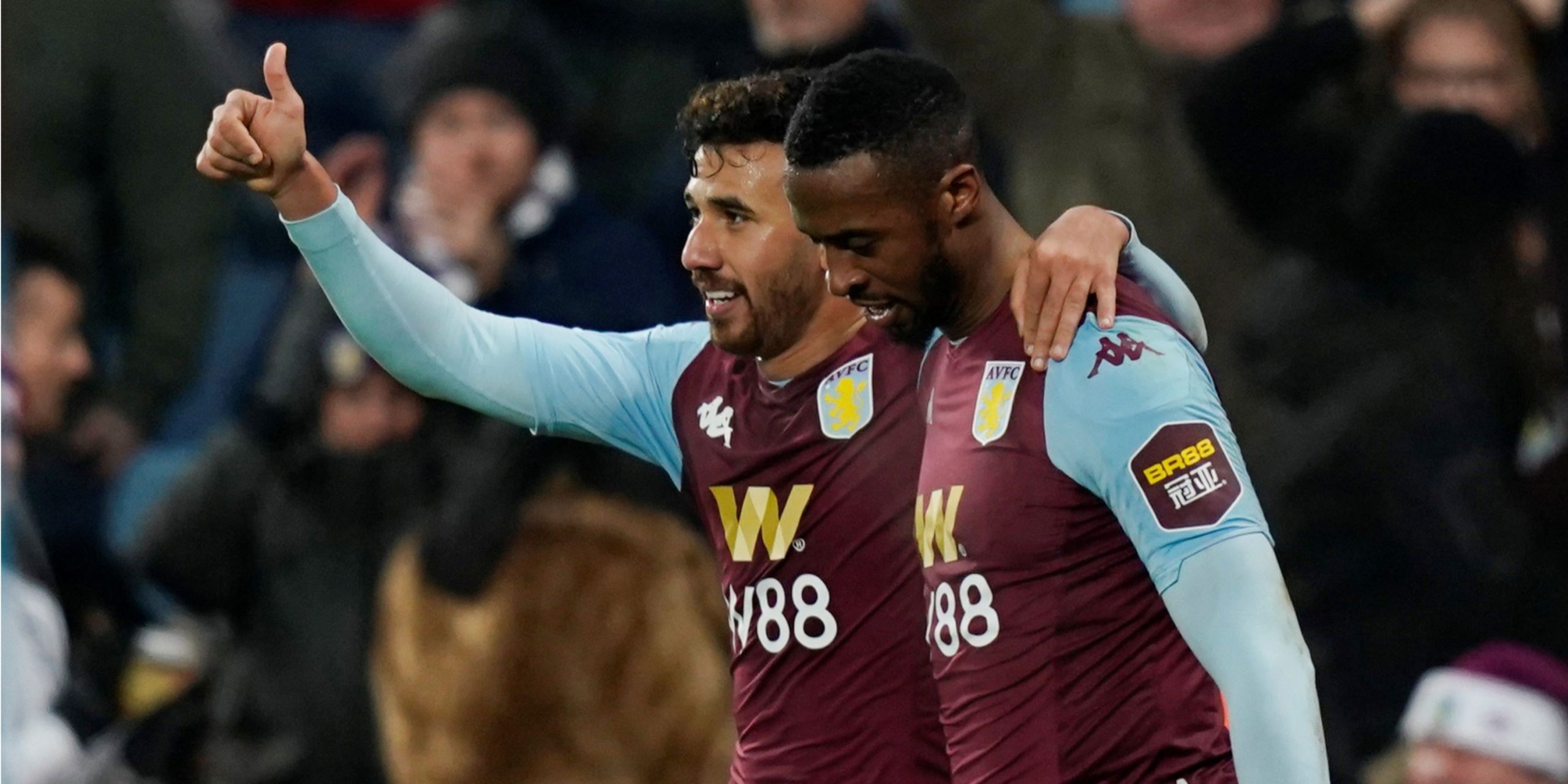Aston Villa’s 0-0 draw with Ajax in the first leg of their Europa Conference League last 16 clash shows just how far they have progressed over the previous 18 months.
It wasn’t so long ago that the Midlands outfit were struggling under Steven Gerrard, being slowly dragged towards a relegation dogfight.
That was until Unai Emery arrived. The Spaniard has rejuvenated the club, leading them to a seventh place finish last season, which gained them entry into Europe.
He has taken things up a notch this season as the Villa Park side are currently occupying fourth spot in the Premier League table, five points clear of Tottenham Hotspur, who they play on Sunday.
A win will see them extend their advantage to eight points and Emery might start to dream of seeing his team face off against the elite.
Being able to sign players such as Moussa Diaby, Pau Torres, and Youri Tielemans has helped the club, but he will now have to move on some deadwood on, in order to free up funds for future signings to bolster the squad.
Villa have been good at moving players on in the past when their performances have started to dip, with one example being striker Jonathan Kodjia.
How much Aston Villa paid for Jonathan Kodjia
The club had been relegated from the Premier League at the end of the 2015/16 campaign, having been present in the division since its inception in 1992.
New boss Robert di Matteo sought to secure promotion at the first time of asking and spent lavishly that summer. Ross McCormack arrived for £12m and Jonathan Kodjia joined for a staggering £15m from Bristol City.
The move was a record for the Championship at the time, but it was clear the Italian manager was delighted to have him on board.
Player
Club signed from
Ross McCormack
Fulham
Jonathan Kodjia
Bristol City
James Chester
West Brom
Aaron Tshibola
Reading
Pierluigi Gollini
Hellas Verona
Mile Jedinak
Crystal Palace
Tommy Elphick
Bournemouth
Albert Adomah
Middlesbrough
Ritchie De Laet
Leicester City
Via Transfermarkt
"We are really pleased to have secured the services of Jonathan,” said the former Chelsea boss upon announcing his latest arrival.
"He is a proven goalscorer and hopefully he'll play an important part in what we hope will be a successful season for the club."
During the 2015/16 campaign, Kodjia had scored 18 goals in the second tier and if there was anyone who could give Villa a lift following their relegation, Kodjia was certainly someone who could offer plenty of goals.
Jonathan Kodjia’s Aston Villa statistics
Heading into the season with a striker partnership of McCormack and Kodjia, Di Matteo knew that goals shouldn’t be a problem.
After a few months, however, it was only one of these players who was putting in excellent performances, and it wasn’t McCormack. He eventually joined Nottingham Forest on loan, but the Ivorian was starring in the second tier.
Across just 36 league matches, he found the back of the net 19 times, although Villa finished in 13th position, a staggering 18 points off the playoff positions, while Kodjia’s goals counted for roughly 40% of their 47 efforts in the Championship that term, showcasing how important he was for them.
He only managed one goal the following season, yet this was due to suffering an ankle injury which kept him out for 14 matches, while another injury to his ankle during the 2017/18 season saw him miss 24 matches in all competitions.
The striker bounced back during the following campaign, scoring nine goals while registering three assists in the Championship as Villa were promoted via the playoffs, ending their three-season stay in the second tier.
The player had been previously hailed as “proven” by former manager Di Matteo and while injury issues had derailed his progress between 2017 and 2019, a fresh start in the Premier League was his main challenge.
Unfortunately, the Ivory Coast international failed to score in any of his six Premier League matches and was criticised by former Villa forward Darren Bent, who stated that Kodjia was “way too inconsistent” in the top flight.
Considering how impressive a start to life he made at the club in 2016, his performances gradually got worse and in January 2020, he was sold to Qatari side Al-Gharafa midway through their first season back in the top division.
What Jonathan Kodjia has done since leaving Aston Villa
The centre-forward got off to a promising start in the Middle East, scoring seven goals in his first ten matches in the Qatari league, adding another 11 in 20 matches during the 2020/21 campaign as he began to put his recent injury issues behind him.
Kodjia joined Umm Salal – another Qatari side – ahead of the 2022/23 season, but his spell there was less promising, scoring only four times in all competitions, and it was not long before he was seeking a move back to Europe.
Having started his professional career in France, the striker joined Ligue 2 side FC Annecy last summer, but the move has not worked out well.
Not only has the former Villa frontman failed to score during his spell in the French second tier, and he also ranks in a lowly ninth position in the squad for shots on target per game (0.3), along with ranking ninth for successful dribbles per game (0.5) and sixth for total shots per game (1.1).
These statistics prove that his performances in front of goal have clearly been lacking a killer edge, which is backed up by his failure to score a single goal for the side so far.
Despite his incredible first few months at Villa Park, Kodjia’s goal output began to dry up – with injuries at fault primarily – and he failed to showcase his true talents once they were promoted to the Premier League in 2019.
Selling him in 2020 was seemingly the correct call, especially with his form since departing, and he is certainly entering into the twilight years of his career.
Emery will want to take note of moving on a player swiftly when they are not performing in order to maximise profits and several players could be entering into their final few months as a Villa player ahead of the summer transfer window.
The club have come a long way since spending £15m on Kodjia back in 2016, but the move eventually proved to be a poor one in the long run.








